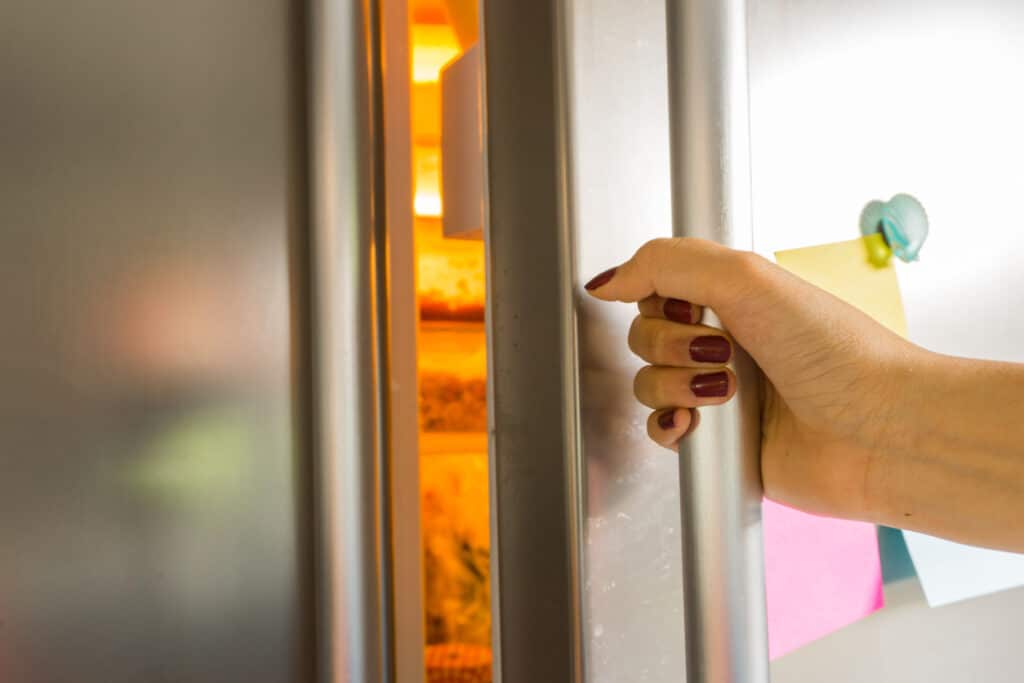How Amazon Go will use AI to offer the frictionless in-store experience. For the last three decades, grocery retailers have tried to overcome the inconvenience of payments in the store’s checkout area, testing our patience to wait in line and having the cashier find the right price of those tomatoes.
Grocery shopping as smooth as opening your fridge
Grocery shopping as smooth as opening your fridge
How Amazon Go will use AI to offer the frictionless in-store experience. For the last three decades, grocery retailers have tried to overcome the inconvenience of payments in the store’s checkout area, testing our patience to wait in line and having the cashier find the right price of those tomatoes.

How Amazon Go will use AI to offer the frictionless in-store experience.
For the last three decades, grocery retailers have tried to overcome the inconvenience of payments in the store’s checkout area, testing our patience to wait in line and having the cashier find the right price of those tomatoes. And at the same time, retailers are working intensely to reduce operational costs stemming from cashiers with overtime-payments.
One of the first steps to address this was taken in the ’90s when the first retail self-checkout system was developed, and 10-15 years later these were prevalent in most retail stores. Around the same time, Scan & Go hand-held scanners were developed. Yet neither of these solutions make the customer experience frictionless; the payment space and process is still required. This poses the ultimate question we face today: is the payment process a necessary step in the purchasers journey?
Amazon’s most recent development (in 2017) says ‘no, it’s not necessary’. They opened their first ‘Amazon Go’ store, with its “No lines, no checkout”. The technology used is much like that of driverless cars. The stores have cameras, sensors, and AI to track your every movement in the store; logging which items you pick up, and billing your account automatically as you exit.
After the Amazon Go beta in 2017, the store in Seattle, US, opened up to the public in January 2018 and Amazon’s bold plans anticipate opening 3000 stores of various kinds in the following years. As of today, Amazon is operating 26 Amazon Go locations in Seattle, Chicago, San Francisco, and New York, where these high-dense areas typically have a big chunk of young and early adopters.
Rumours about international expansions began the same year with Amazon trademarking slogans in the UK with the IPO, including the now well-rehearsed “No Lines, No Checkout”. It has been relatively quiet until recently when the media reported Amazon’s plan to open 30 Amazon Go stores in the UK. As with the US Amazon Go stores, the concept will be the same, you use the app to enter, take what you want, and that’s it. Remember not to share the groceries in your basket with your friends though. If you grab it from the shelf, you pay for it.
With that said, the Amazon Go stores have up until recently been stocked with convenience food rather than the full assortment that a traditional supermarket has to offer. That changed with its first Amazon Go Grocery store in Seattle. Where the Amazon Go stores will be situated in the UK and how they will be set up is yet to be known. Can Amazon Go use the same approach in the UK? If so, have they fully taken into account the expectations, needs, and desires of the UK population and considered how the UK differs with respect to the US, especially in terms of the future retail experience for citizens of each country?
What we do know is that the grocery retail players in the UK ie Tesco, M&S and Morrisons are looking at their solutions to revamp the in-store customer experience, whilst competing with new market entrants such as the expanded Amazon Fresh. They have focused on and demonstrated solutions based on the well-proven Scan & Go concept with the benefit that you now can use your phone to scan and pay. Better yes, but you still need to scan the groceries with your phone and then scan your phone on the way out, making it far from the “Just Walk Out” experience that Amazon offers in the US. If the UK competitors of Tesco, M&S and Morrisons really do want to compete with the likes of Amazon Go and Amazon Fresh, they need to consider offering their customers something extra, something special. By analysing current trends – such as rising demand for online shopping, increased basket capacity and delivery availability – UK retailers can strategise to meet current needs and pose themselves ahead of the competition that Amazon poses. Furthermore, by using their existing customer base, UK stores can personalise and customise the consumer experience through use of available data that enables them to predict what their customers are likely to want. Tesco, for example, already offers the option of a ‘saved basket’. What if they were to offer the option of a weekly saved shop that simply arrives at the same time each week, automatically billing the customer account in a direct debit setup, while the consumer sits at home, awaiting their weekly shop yet having to do nothing for it?!
But perhaps the UK isn’t ready for all this just yet. Last year, Sainsbury’s removed all of the manned checkouts in one of its stores, solely offering the Scan & Go concept as a pilot with the result that the one desk, intended for customer service, experienced long queues of customers wanting to pay with cash or card. A few months later, it decided to reinstall the checkouts stating that all customers are not ready for a completely checkout-free store, even with the Scan & Go concept.
Is this a surprise? Not really, recent studies have shown that 60% of customers in the UK prefer a manned checkout, whereas only 30% of customers prefer a self-service checkout, which would include all types of unmanned checkouts.
The investment Amazon is making in these stores with cameras and sensors is most likely tremendous, and the pay-off is unreachable. We also know that many of the potential customers are unlikely to shop in the store. But at the same time, early-adopters in the high-density population areas in London will, of course, see Amazon’s move as bold and in due time, someone will joke about the time when you had to pay in the supermarket. For the willing, the smooth, frictionless checkout experience is within reach!
But with the global pandemic, touch-free is the new black, so perhaps the survey results will look different next year. And experts are presenting different ideas on how technology could be utilised. In China, the BingoBox concept with unmanned checkouts and unmanned stores has been widely spread. Will the new supermarket offer an unmanned experience during the night with a limited assortment of groceries? Perhaps with cameras and facial recognition as the security guard.
Undeniably, smooth in-store checkouts, enabled by smarter and more customer-friendly Scan & Go technologies are here to stay, and most likely, the “Just Walk Out” concept is the next step for most players as technology and financials allow it.
This post was originally written by: Eric Gudmundsson

